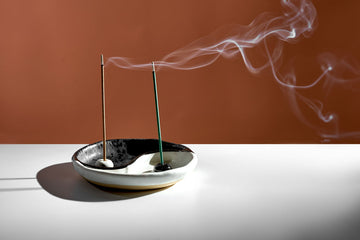Why Chinese Incense Works So Well for Meditation & Yoga?

When it comes to deepening your meditation or yoga practice, setting the right atmosphere is everything. Chinese incense has been used for centuries to create spiritual clarity, emotional balance, and sensory calm—all essential for mindfulness.
Unlike synthetic or overly perfumed Western incense, Chinese incense is crafted from medicinal herbs, woods, and resins, such as sandalwood, agarwood, and mugwort. These ingredients don’t just smell good—they offer real mental and physical benefits. The aroma grounds the breath, clears mental fog, and gently guides the mind into focus.
In practices like meditation or yoga, where stillness, awareness, and breath are key, incense acts as an anchor. The slow curl of smoke, paired with earthy fragrance, helps reduce distractions and signals your body: it’s time to be present.
Which Incense Fits Best for Each Practice?

Every mindfulness practice benefits from a slightly different aromatic profile. Here's what works best:
1. Meditation
Best Scents: Sandalwood, Agarwood
Sandalwood creates a warm, woodsy atmosphere that slows racing thoughts. Agarwood is deeper, resinous, and ideal for longer, silent meditations.
2. Yoga
Best Scents: Mugwort, Clove
If your yoga is gentle and breath-focused (like Yin or Hatha), mugwort is perfect for centering. Clove is slightly energizing and works well with more active flows like Vinyasa.
3. Mindfulness or Journaling
Best Scents: Dragon’s Saliva (Ambergris Resin), Clove
These help stimulate gentle focus and balance emotion, ideal for writing or slow tasks.
4. Pre-sleep Routine
Best Scents: Sandalwood, Agarwood
Burning incense 20–30 minutes before bed can signal your body it’s time to wind down.
5. Outdoor Relaxation or Summer Evenings
Best Scents: Mugwort, Clove
These traditional herbs are known to have natural mosquito-repelling properties—a peaceful bonus during warmer months.
How to Burn Chinese Incense Properly?

To get the most from your incense, proper burning is key—not only for aroma, but also for safety and experience.
1. Choose Your Format:
Chinese incense comes in sticks, cones, or coils. Stick incense is most common and beginner-friendly.
2. Select the Right Burner:
Use a heatproof burner—preferably ceramic or brass—that supports proper ash fall.
3. Ventilate Lightly:
Keep windows slightly open. A light breeze helps distribute the aroma and prevents smoky buildup.
4. Set the Timing:
Burn incense 10–15 minutes before your session to let the space absorb the scent.
5. Never Burn Unattended:
Always place incense on a stable surface away from flammable objects, and never sleep with incense burning.
FAQs
Q: Can I use incense every day for mindfulness?
Yes. Natural Chinese incense can be used daily without overstimulation, especially when made without chemicals or synthetic oils.
Q: Will it make my space smell smoky?
Not if burned correctly. One stick in a ventilated room leaves a subtle, calming scent without heavy smoke.
Q: Is incense safe to use around pets or children?
While most natural incense is safe in moderation, always ensure proper ventilation and keep it out of direct reach.
Q: Can incense really help me sleep better?
Absolutely. Scents like agarwood and sandalwood calm the nervous system, making it easier to transition into rest.
Q: Can I use incense instead of candles or diffusers?
Yes—especially if you prefer smoke-based rituals. Incense creates a more immersive, spiritual atmosphere.
🧘 Final Thoughts
Incorporating Chinese incense burning into your meditation, yoga, or mindfulness routine isn’t just a ritual—it’s a sensory cue that prepares your body and mind for inner work.
From calming sleep routines to energizing morning flows, there’s a perfect incense for every moment of your day. And because many blends are made from natural Chinese herbs, you're not just filling your space with scent—you're connecting to centuries of healing tradition.
Looking to try Chinese incense for yourself? Whether you're curious or already a fan, Moramist offers incense sticks and burners rooted in wellness and tradition—crafted for those who take mindfulness seriously.





